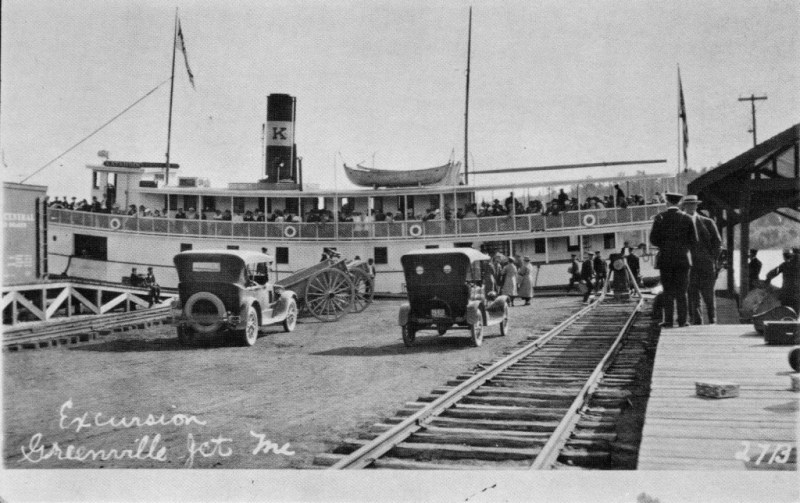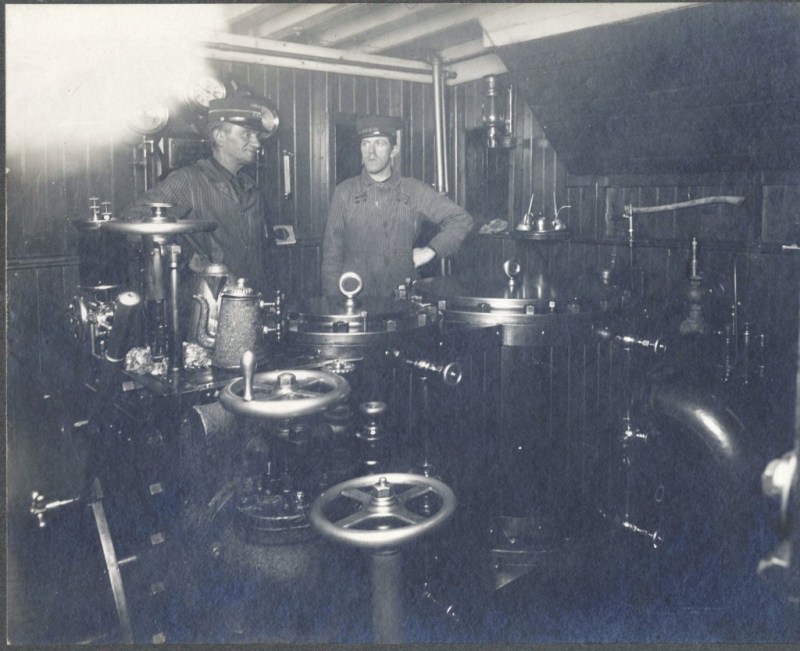

Steamboat history began on Moosehead Lake in 1836. As many as 50 boats once steamed up the lake carrying passengers, livestock, mail, supplies and equipment. Steamboats were the only means of transportation to the large resorts, like Mount Kineo, as well as the small hunting camps and villages around the lake. By the late 1930s, with the development of roads around Moosehead, only the Katahdin remained. Used as a towboat to haul booms (rafts) of logs until 1975, she participated in the nation’s last log drive.
A group of local citizens learned of plans to scuttle the “Kate”. Fearing the loss of this grand Lady of the Lake, they began a grassroots effort to save the boat. In 1977, they founded the nonprofit Moosehead Marine Museum, acquiring the Katahdin as its star exhibit. In 1979 the “Kate” was added to the National Register of Historic Places. The group’s original intent was to use the boat as a floating museum; however, a marine survey proved that, with repairs, she could be made seaworthy and she began making daily cruises along the lake. Since that time, the museum has raised considerable sums of money from federal grants and very generous donors to restore the Katahdin and keep her sailing.
In 1998, Louis O. Hilton leased the land where the current museum building stands to the Moosehead Marine Museum. Construction was soon underway for a new building to house the many artifacts, photographs and various memorabilia that has been generously donated over the years. In 2010, Mr. Hilton gifted the property to the museum, giving the organization – and the “Kate” – a permanent home.
Today, the museum is open seven days a week from late June through mid-October. It houses exhibits and serves as the ticket office for Katahdin cruises.
